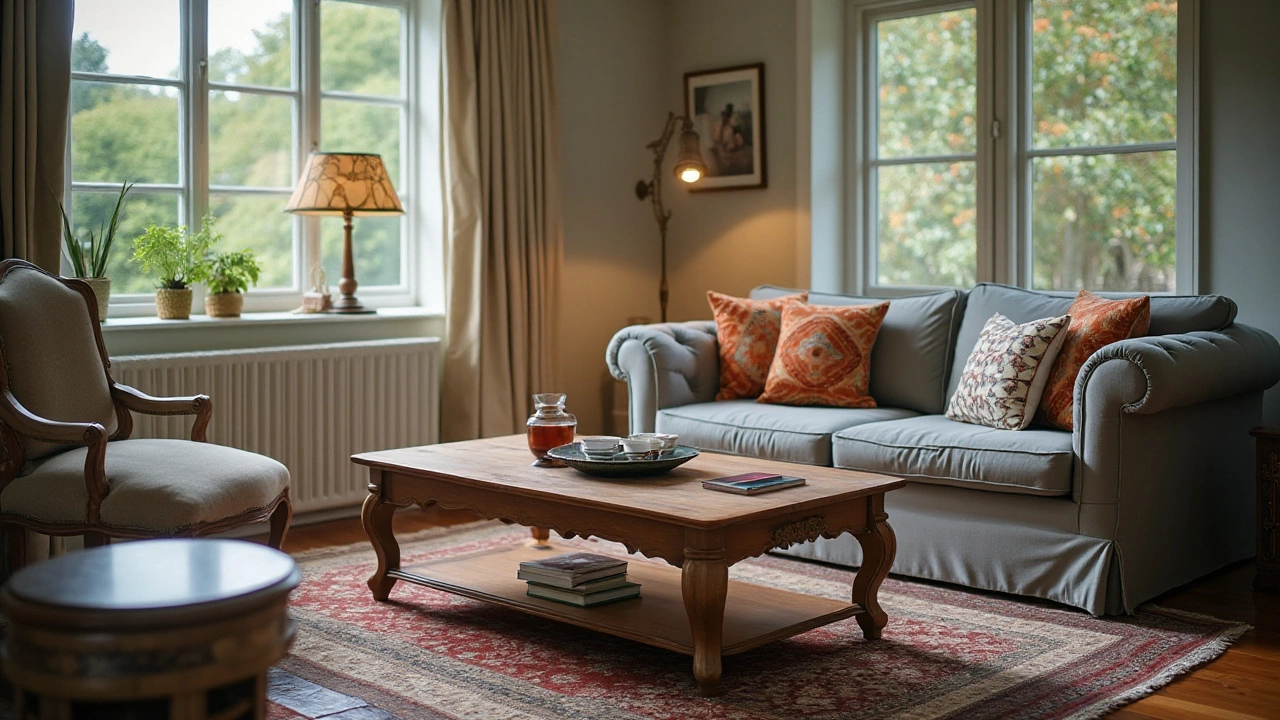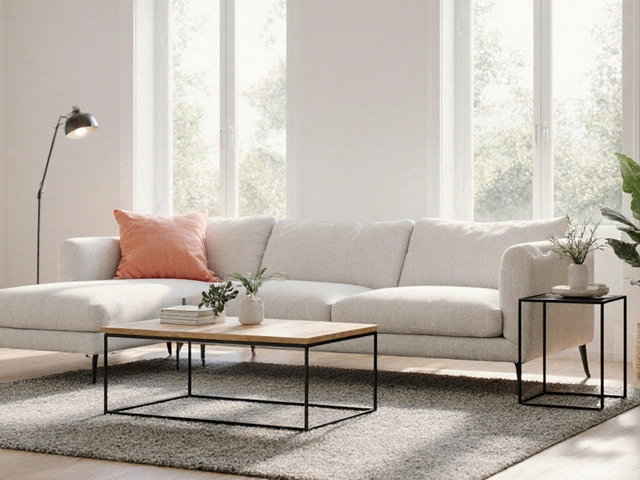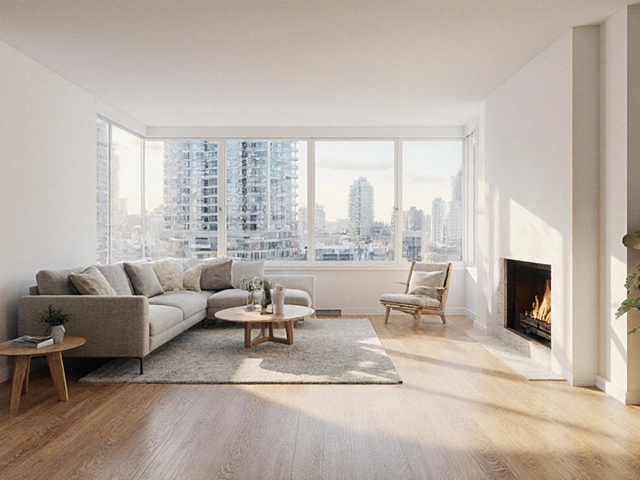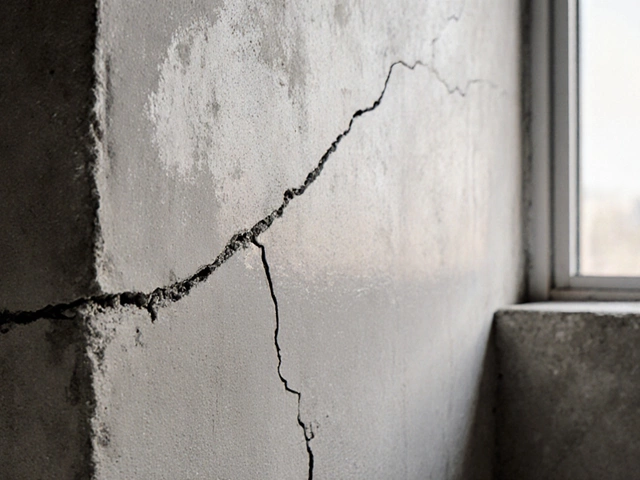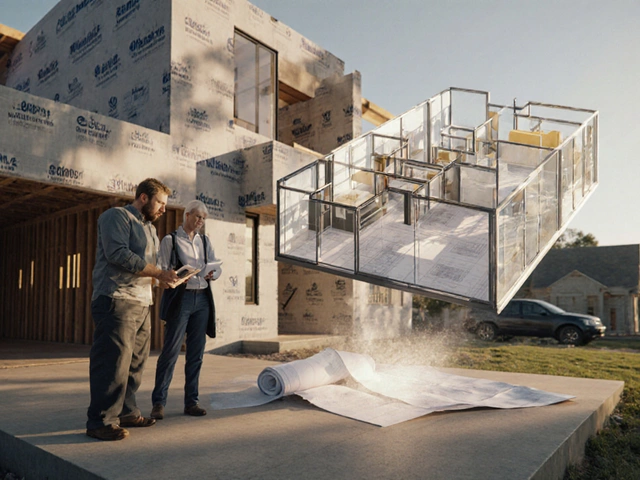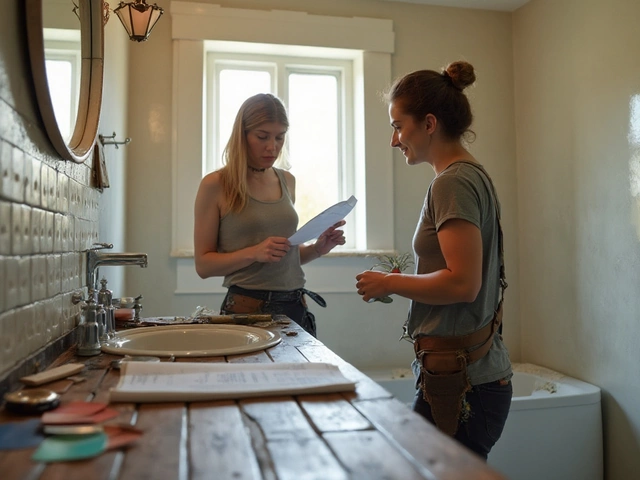Pairing a coffee table with a couch is an essential aspect of living room design that combines style and practicality. It's a dance of finding just the right balance between visual harmony and functional needs, something many strive to achieve in their homes. On one hand, there's the couch—a statement piece, often the centerpiece of a room. On the other, the coffee table, which doubles as a workhorse and a style staple.
Consider your living room's dynamics, akin to orchestrating a symphony. The right coffee table enhances the couch, elevating your space's aesthetics while ensuring it supports your lifestyle needs. This requires careful thought about designs, sizes, materials, and colors. Dive into these aspects, and you'll find that the art of pairing transcends mere matching, creating a cohesive and inviting atmosphere tailored just for you.
- Understanding Style and Function
- Proportion and Scale Techniques
- Material and Texture Considerations
- Color Harmony and Contrast
- Shape and Spatial Arrangement
- Aesthetic and Practical Tips
Understanding Style and Function
When it comes to pairing a coffee table with a couch, the interplay of style and function is crucial. Imagine your living room as a canvas where each piece of furniture contributes to the masterpiece. The style of a coffee table often reflects the broader aesthetics of your home, while its function aligns with your personal needs and daily habits. Choosing the right style involves acknowledging the mood and personality you want your space to convey—be it cozy and intimate, sleek and modern, or rustic and timeless.
To delve deeper into styles, think about the lines and finishes that dominate your living room. A modern couch with clean lines and a minimalist finish might pair well with a glass or metal coffee table that amplifies its contemporary vibe. On the flip side, a plush, thick fabric couch could be the perfect match for a heavily carved wooden table, adding depth and warmth to a traditionally styled room. As a guiding principle, maintain a common thread – it may be color, material, or shape – to create a unified look.
The function of your coffee table isn’t solely about holding beverages. Its role extends to supporting technology gadgets, housing books, or simply providing a place to put your feet up after a long day. Consider what your daily life necessitates from this furniture piece. For those who entertain frequently, a wide, expansive table offers ample space for drinks and hors d'oeuvres. If storage is a concern, look for a design that features drawers or shelves, allowing you to tidy magazines and remote controls out of sight, but within easy reach.
Understanding these elements through the lens of personal preferences not only helps in selecting the right pieces but also in creating a space where every use and aesthetic need blends seamlessly. Interior designer Michael S. Smith once said,
"It’s not just about the looks, but how you’ll live with it every day."This wisdom highlights the balance every homeowner should strive for, ensuring that while the living room design is visually appealing, it must be equally comfortable and sustainable.
Functionality extends beyond storage and daily use—it can also embrace flexibility in your space. Consider having a coffee table with wheels for easy movement, which is perfect for changing room layouts without hassle. Alternatively, nesting tables offer a dynamic option for those who might need additional surface area without committing to a larger, permanent piece. Such practical solutions allow your space to adapt to new scenarios, whether it's a family movie night or a lively gathering of friends.
Making a well-informed decision on style and function will positively influence the mood of your home, making it both inviting and practical. These choices reflect who we are and how we live, bringing together form and function to create a truly personalized and welcoming space.
Proportion and Scale Techniques
When choosing the right coffee table for your couch, understanding proportion and scale is key. It's about finding that magical formula where nothing feels too overpowering or awkwardly small. In general, your coffee table should be about two-thirds the length of your couch. This ratio creates a harmonious look, allowing each piece to complement the other without one overshadowing the space. This proportionate approach not only supports visual balance but also helps in functional layout, ensuring everyone seated has easy access to the table.
The height of the coffee table also plays a significant role in achieving balance. Ideally, the table's height should match the height of the couch's seat or be within a couple of inches lower. This ensures that aesthetics aren't sacrificed for accessibility and comfort. A coffee table that is too high or too low can be visually jarring and impractical, especially for tasks like reaching for a cup of coffee or placing a book. The right height creates a seamless flow from the couch to the table, making the living room more inviting and comfortable.
When considering materials and styles, it's vital to acknowledge the room’s architecture and existing furniture. If your couch boasts a bulky, tufted design, a sleek, minimalist coffee table might provide a striking contrast that highlights both pieces. Alternatively, matching a light, airy couch with a similar styled table encourages a cohesive look. Often, one might have constraints due to room size or layout, and selecting a multi-functional table—such as one with storage or a convertible top—can prove invaluable. These features can transform limitation into creative expression, adding layers of style and utility to your living area.
An inspiring perspective on this comes from renowned interior designer, Nate Berkus, who once noted:
"Your coffee table should be the map to your heart. It represents who you are, what you love, and where you've been."This sentiment captures the essence of personal expression in design, where each choice adds up to a narrative that tells your story. Exploring different materials and styles can deepen this narrative by reflecting personal tastes, whether it's through rustic wood finishes or industrial metal designs that offer character and depth.
For those interested in adding a bit of personality through layout, experimenting with unconventional shapes, like oval or geometric designs, can break the monotony of a standard rectangular table. However, when doing so, remember that the couch pairing should still drive the visual alignment of the space, ensuring these daring choices enhance rather than dominate the room's look and feel. In larger rooms, where space allows, using two smaller tables instead of one larger piece can add dynamism and flexibility, offering additional options for arranging decor items or adapting the space for different activities.
A quick reference guide to maintain when calculating ideal sizes might look like this:
| Couch Length | Suggested Table Length |
|---|---|
| 6 feet | 4 feet |
| 7 feet | 4.6 feet |
| 8 feet | 5 feet |
Matching these guidelines can create the perfect visual flow, ensuring your living space does not just look comfortable but feels inviting too. The calculus of matching these elements involves more than numbers; it’s about shaping an environment that aligns with your personal needs and aesthetic values. Don’t hesitate to experiment with your design, evolving as your tastes and lifestyle needs change over time.
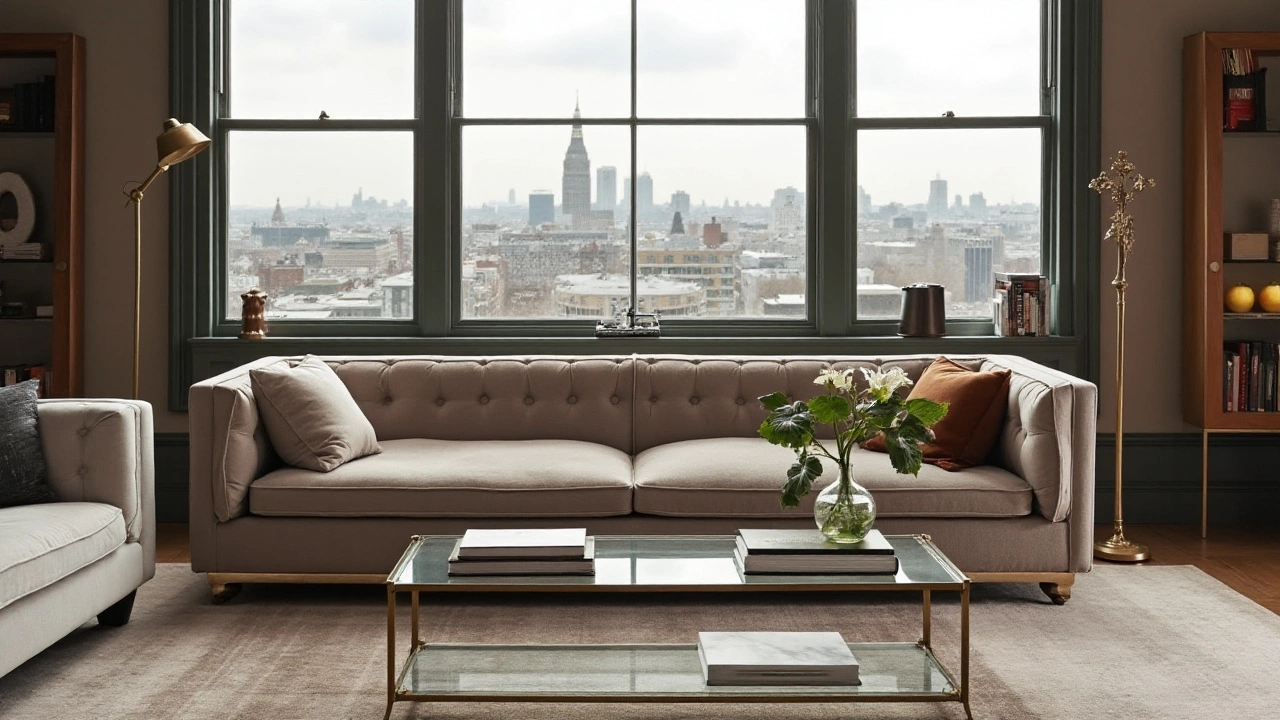
Material and Texture Considerations
When it comes to the harmonious pairing of a coffee table with a couch, material and texture emerge as key factors that shape both the aesthetic and the tactile experience of your living room. Whether your couch flaunts a plush velvet touch or a smooth leather sheen, the coffee table's material can significantly influence the room's overall ambiance. Imagine a sleek glass coffee table next to a fabric couch—it can evoke a sense of modern elegance, but consider how the translucency of glass plays with light, fostering a sensation of openness and space. In contrast, a wooden table exudes warmth and comfort, its grain patterns telling nature's narrative right in your living room.
For those who fancy a rustic charm, woods like oak, walnut, or reclaimed timber can forge a cozy and inviting atmosphere. These materials don't just contribute to the room's visual aesthetics but also affect how sound travels, how light reflects, and even how the surfaces feel against the skin. In spaces where aesthetics need to echo sophistication, materials like marble or metal might come into play, introducing sleekness and a touch of opulence. Metal-framed tables with glass tops are particularly captivating as they blend transparency with an industrial edge, an intersection of utility and craftsmanship.
"A room should never allow the eye to settle in one place. It should smile at you and create fantasy." - Juan Montoya
Textures add another layer of intrigue—contrasting textures can introduce depth or harmony, creating a multisensory environment that captures attention without overwhelming the senses. A glossy surface like glass or polished metal can complement a luxuriously soft or intricately patterned sofa fabric, balancing the tactile softness with the visual crispness of the other. Alternatively, matching the texture of a wooden coffee table with a woven or linen couch adds an element of unity that ties the entire space together.
The Balance of Harmony and Contrast
When considering the balance of harmony and contrast, textures from the keyword list such as fabric, wooden, and leather become vital. Incorporating a textile coffee table runner or coaster set can also soften the hardness of the table’s material, adding layers through colors and patterns. While matching fabrics might seem straightforward, seeking complementary textures ensures a harmony that doesn't veer into monotony. For example, mixing a leather couch with a burlap-covered table accessory introduces a rugged, yet cozy element, championing the appeal of organic textures in a modern setting.
- Glass: Adds a sleek, contemporary look but requires maintenance to prevent smudges.
- Wood: Offers warmth with a variety of finishes from rustic to polished elegance.
- Metal: Provides durability and an industrial or modern touch.
- Marble: Brings sophistication and timeless appeal, though heavy and requires careful maintenance.
Attention to the material and texture details can elevate any living room decor, ensuring that your coffee table does not simply become an afterthought but, instead, a functional centerpiece that complements the couch. It's about achieving that perfect synergy, turning your living room into a space that's as comforting as it is captivating, so each material choice is a stroke on the canvas of your home.
Color Harmony and Contrast
When it comes to achieving a harmonious balance between your coffee table and couch, color plays a critical role. This delicate dance of hues can transform a merely functional space into one that feels intentionally curated and deeply personal. Think of color as the silent dialogue taking place between these two essential pieces of furniture. To start, you need to identify the dominant and accent colors of your living room. These set the foundation, guiding the selection process for your coffee table.
Harmony is about cohesiveness; it’s the serene balance you create when selecting colors that complement one another rather than clash. In interiors, analogous color schemes—where hues sit next to each other on the color wheel—are often employed to maintain a harmonious look. For instance, pairing a navy couch with a coffee table in muted ocean shades can provide a soothing visual experience. But don't be afraid of a little contrast for additional pop. Introducing contrasting colors can accentuate both pieces, making them stand out while reinforcing the overall aesthetic.
Color contrast, when done right, can significantly elevate the space. High-contrast combinations, such as a white couch paired with a dark walnut coffee table, create dynamic tension that excites the eye. It draws attention to both the couch and the table individually yet ties them together as a deliberate choice. In the words of acclaimed interior designer Nate Berkus:
“The best interiors are layered, mix and match patterns and colors through thoughtful curation, ultimately telling a story.”His insight encourages layering colors and patterns, not only ensuring they match but that they actually enhance each other's appealing qualities.
Deciding between harmony and contrast isn't merely an aesthetic choice but also one that can impact the room's mood and energy. Softer, more harmonized schemes often wind up feeling calming and conducive to relaxation. In contrast, a well-executed contrast scheme can elevate energy levels, infusing vitality into a space. Consider a vibrant red coffee table in a room where neutrals dominate; it becomes a bold statement piece, stimulating conversation and interest.
A less frequently considered but highly effective approach is the use of textures alongside color. Different materials can reflect light differently, affecting how colors appear. For instance, a glass coffee table with blue undertones can complement a soft grey sofa, adding depth without overcrowding the eye.
Understanding these principles allows you to play around and achieve the level of harmony or contrast that best suits your lifestyle and design preferences. If choosing colors feels overwhelming, samples and swatches can be fantastic aids. Remember, it’s about creating a space where you feel at home, somewhere that's inherently you. Whether you lean towards a cohesive palette or a vibrant cacophony, the interplay of color between your couch and coffee table is a canvas for your personal expression.
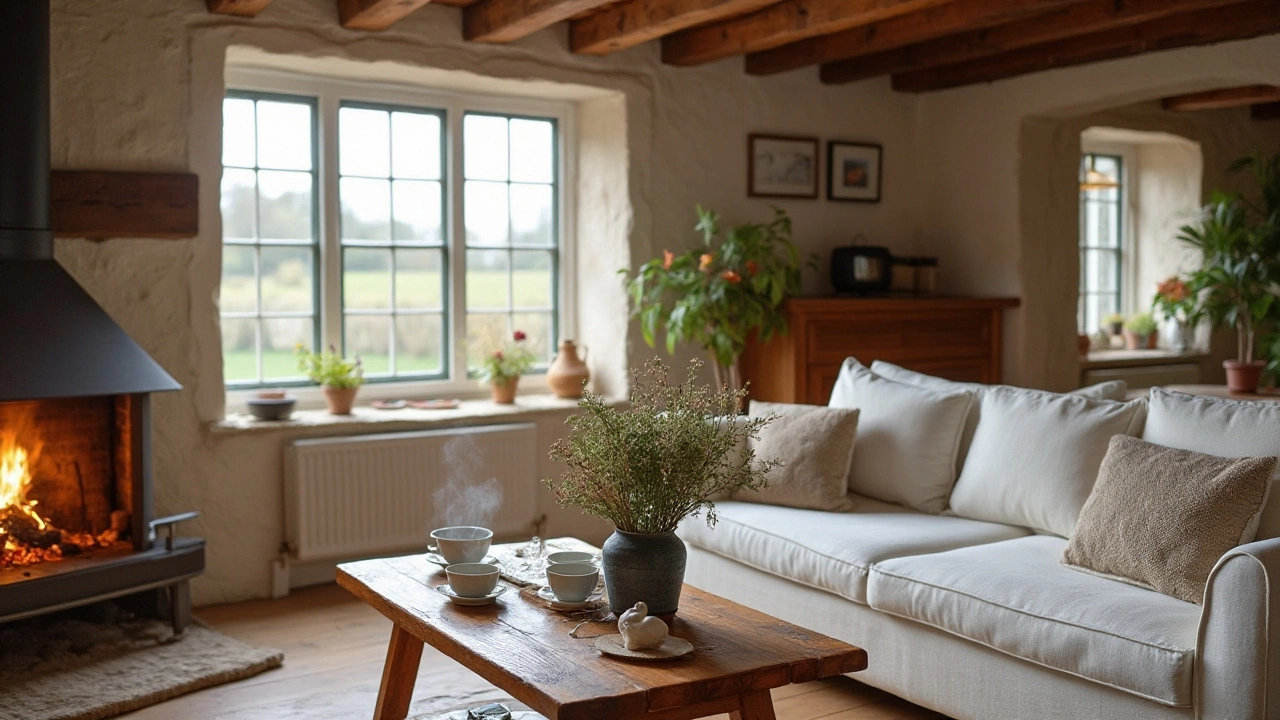
Shape and Spatial Arrangement
When it comes to integrating a coffee table with a couch, the significance of shape and spatial arrangement often defines the flow and function of your living area. A thoughtfully chosen shape can complement the contours of your couch, creating a symmetry that feels effortless yet intentional. Traditionally, rectangular coffee tables align well with long, linear couches, as they mirror the shape and reinforce a sense of stability and balance. However, curvilinear forms, such as round or oval tables, introduce fluidity and can soften the sharp lines of a boxy couch. This not only works wonders in promoting a more inviting atmosphere but also facilitates better movement around the space, which is crucial in high-traffic areas of the home. Imagine a small living room where every inch counts; here, a round table can prevent bruised shins and stubbed toes by minimizing sharp corners.
The arrangement of the coffee table relative to the couch is equally crucial. Consider the typical usage of both pieces and configure them to promote comfort and accessibility. The ideal distance between a couch and coffee table averages between 14 to 18 inches, allowing ample room for leg movement while keeping drinks and snacks within easy reach. The aesthetic impact of this arrangement cannot be overstated—it can dictate the comfort level and accessibility, thus enhancing the user experience. Notably, consider placing the coffee table slightly off-center; doing so could add a spontaneous and laid-back vibe, a trick often used by designers to break the monotony of too-perfect symmetry.
"A living room without symmetry is like a story without a plot. Yet, the beauty of design lies in striking a fine balance between order and creativity." – Nate Berkus, Interior Designer
Visualizing the space can be facilitated by mapping out the dimensions on the floor with painter's tape or using an augmented reality app to see how various shapes fit within your existing layout. These practical steps help prevent future regrets over buying pieces that visually overpower or underwhelm. Another important aspect is the visual weight of the furniture pieces; a chunky, robust couch pairs well with a substantial, low-profile coffee table, while a sleek, mid-century modern couch might benefit from an equally airy and minimalist table. Pay attention to leg styles too; a mix of leg silhouettes can add an exciting layer of contrast, and mixing wood tones or metal finishes introduces a tactile richness that speaks to modern sensibilities.
In more expansive spaces, consider layering multiple tables of varying heights and shapes to create an adaptable central montage. This approach, which has gained popularity in contemporary interior design, permits flexibility, facilitating multifunctional use and enhancing visual intrigue. Imagine pairing a low, round coffee table with a taller, narrow side table. Such combinations cater to both aesthetic and functional needs, accommodating everything from intimate gatherings to solo afternoon reading sessions. Using mismatched shapes introduces an informal, eclectic edge that screams creativity and personalization, effortlessly broadcasting the character of your living quarters.
Aesthetic and Practical Tips
When it comes to pairing a coffee table with your couch, aesthetic appeal is only part of the equation. Practicality should also guide your decision, ensuring that your living space is as functional as it is beautiful. Start by considering the primary use of your coffee table. Are you someone who frequently hosts guests, using the table for serving drinks and snacks? Or is it more of a centerpiece for showcasing favorite books and decorative items? Determining the main function helps in choosing a design that aligns with your lifestyle needs.
The integration of aesthetic and practical elements can be seen in the growing trend of multifunctional furniture. Coffee tables with built-in storage are increasingly popular, offering a place to neatly tuck away remotes, magazines, and even blankets, reducing clutter in your living area. Living room design experts suggest opting for models with drawers or lift-top mechanisms, which provide hidden storage without compromising style. This ensures the top of your table remains clear and ready for use, whether it's to hold a laptop or a classic game board on family nights.
Striking the Right Balance
Balancing aesthetics and practicality also extends to the choice of materials. Wood is a traditional choice, valued for its durability and timeless appeal. Glass surfaces, on the other hand, offer a modern and sleek look, making small spaces appear larger due to their reflective qualities. While metal-framed tables fit industrial or contemporary themes, ensuring you align material choice with your interior style can connect various elements of your design seamlessly. A study by the National Association of Home Builders highlighted that over 35% of homeowners prefer multi-functional furnishings, showcasing this trend in modern home design.Matching your couch pairing with a coffee table involves considering the room's flow and accessibility. Ensure there's comfortable space between the table and seating areas, typically 12 to 18 inches, to prevent a cramped environment while allowing easy movement around the room. This spacing is crucial for both comfort and safety, minimizing the risk of accidental bumps or stumbles.
"Design is not just what it looks like and feels like. Design is how it works," Steve Jobs once said, emphasizing the importance of marrying form and function. His words remind us that the ideal living room setup aims for both beauty and utility, ensuring that every piece serves a purpose while fitting into the visual story of your home.
Color and Texture Considerations
Color and texture also play significant roles in this decorative dance. For instance, a neutral-colored couch can come to life with a bold, colored table, transforming a bland space into a vibrant environment. Conversely, a richly-hued couch may benefit from a sleek, white or glass table to avoid overwhelming the senses. Textures provide another layer of aesthetic interest—consider tables with a mix of materials like a wooden top supported by metal legs, offering a tactile contrast that keeps your living room intriguing.Incorporating these interior decor tips ensures that your living space reflects personal taste while catering to everyday needs. Balancing aesthetics with practicality in such elements transforms a regular room into a haven of style and comfort, a reflection of who you are and how you wish to interact with your space.
